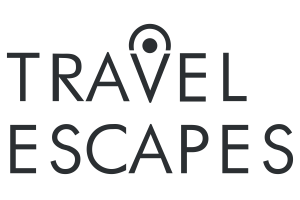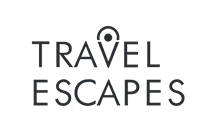Overview
When it comes to finding the best airfare, tools like Google Flights, Skyscanner, and Kayak are your go-to companions! These search engines make it easy for you to hunt down fantastic flight deals by allowing you to compare prices effortlessly. Plus, they offer handy features like flexible date searches and fare alerts to keep you in the loop.
Imagine saving over 20% on your next trip! By using these platforms, you can:
- Monitor price fluctuations
- Compare options across various airlines
- Book your flights strategically in advance
It’s all about making your travel planning smoother and more budget-friendly. So, why not dive in and explore the possibilities? Your next adventure awaits!
Key Highlights:
- Airfare search engines like Google Flights, Skyscanner, and Kayak help travelers compare prices and find the best flight deals.
- By 2025, 78% of travelers are expected to use airfare search engines for affordable tickets.
- Flexible date search tools can lead to average savings of around 20% by allowing travelers to adjust their travel dates.
- Budget airlines are popular for their low rates, but additional fees for services can negate savings.
- Booking flights in advance—1-3 months for domestic and 3-6 months for international—can significantly reduce costs.
- Travelers can save over 20% by comparing prices across various platforms, including direct airline websites.
- Setting fare alerts on platforms like Google Flights and Skyscanner helps travelers catch price drops and special promotions.
- Booking one-way tickets across different carriers and considering alternative airports can lead to lower fares.
- Using credit card rewards and loyalty programs can unlock discounts and free flights, enhancing travel affordability.
Introduction
Navigating the world of air travel can often feel overwhelming, can’t it? Especially when it comes to finding the best deals on flights! With countless options at your fingertips, understanding how to effectively utilize airfare search engines becomes essential for budget-conscious adventurers like you. These powerful tools—think Google Flights, Skyscanner, and Kayak—not only gather pricing from various airlines but also offer unique features that can lead to significant savings.
As the travel landscape keeps evolving, savvy travelers are increasingly turning to flexible date search tools, fare alerts, and strategic booking techniques. These approaches can really enhance your travel experiences while keeping costs in check! This article dives into the intricacies of airfare search engines, offering insights and tips to help you make informed decisions and unlock the best possible prices for your journeys. Let’s embark on this adventure together!
Understanding Airfare Search Engines: The Key to Affordable Travel
Airfare search engines are your go-to online platforms for finding the best flight deals! They gather flight information from countless airlines and agencies, making it super easy for you to compare prices and snag the best offers available. Tools like Google Flights, Skyscanner, and Kayak really shine in this space, streamlining the flight booking process by giving you a comprehensive overview of options. This is especially important in today’s competitive tourism market!
These engines use sophisticated algorithms to pull data from various sources, ensuring you have access to the most competitive prices out there. By 2025, it’s expected that around 78% of travelers will be using these platforms to find affordable airfare. That’s a clear trend towards embracing digital solutions for planning your trips! Interestingly, users tend to spend about 40% more when booking on a desktop compared to mobile. So, choosing the right platform can make a big difference in your travel budget!
Experts agree that these top airfare search engines are fantastic for lowering your journey expenses. Annaleise Lohr, a Research Director, notes, “Americans are utilizing websites and apps to buy airfare online, and most favor using the carrier’s own site or mobile application to do so.” This really shows how much we rely on technology for planning our adventures!
Research also shows that many travelers prefer using these search engines over direct airline websites. They offer a broader perspective on pricing and options, making it easier for you to find the best deals. A recent study revealed that a majority of Americans lean towards using these tools, like flight comparison sites, to secure the best airfare. It’s clear that technology is becoming an essential part of our travel planning!
Real-world stories highlight the tangible benefits of these search engines. Travelers have shared their experiences of saving significant amounts by using these platforms, with some even finding fares hundreds of dollars lower than what’s listed on airline websites. This not only helps with individual budgets but also encourages more spontaneous trips as cost barriers are lowered.
With a rich background as a journalist and accolades like the NATJA Gold and Bronze Awards, Karen LeBlanc brings credibility to The Design Tourist as a trusted resource for insights. In summary, learning how to navigate these airfare search engines can really impact your travel budget, making it easier to find economical airfare for both domestic and international trips. As these tools continue to evolve, they remain an essential resource for anyone looking to enhance their journeys while keeping expenses in check!
Leveraging Flexible Date Search Tools for Better Deals
Flexible date exploration tools are fantastic for you as a traveler! They let you examine flight prices across a range of dates, giving you a strategic advantage if your schedule is a bit flexible. This feature is invaluable because it helps you spot the most cost-effective days to fly. For instance, platforms like Skyscanner and Google Flights allow you to view prices for an entire month, making it super easy to find the best dates for your journey.
If you embrace this flexibility, you could save a bundle on airfare! In 2025, average savings from flexible date searches are expected to be around 20%. That’s a significant financial benefit just for adjusting your travel plans a bit. Case studies reveal that travelers using these tools have saved hundreds of dollars by shifting their departure or return dates by just a few days.
Did you know that 57% of global visitors take beach vacations, while 56% prefer destinations rich in city history? By using adaptable date exploration tools, you can enhance your itinerary and budget, ensuring you get the most out of your experiences without overspending. As tourism journalist Karen LeBlanc notes, “What distinguishes The Design Tourist from other exploration blogs is its focus on creativity and connection.” This is a perfect example of how adaptable date tools can improve your trip planning.
Incorporating flexible date search tools into your trip planning not only helps manage your budget but also encourages you to explore new destinations and experiences that align with your creative interests. This approach can lead to a richer journey, opening up opportunities to engage with diverse cultures and authentic local experiences that you might otherwise overlook.
Experts in tourism highlight the importance of these tools in today’s journey planning. They emphasize that being open to flexible dates not only boosts your chances of finding cheaper flights but also enriches your overall travel experience. The benefits of using flexible date inquiry tools extend beyond just cost savings; they provide you with the chance to discover new locations and experiences that you might have missed due to financial constraints.
In conclusion, adaptable date inquiry tools are essential for savvy explorers like you who want to optimize vacation budgets while enjoying the freedom to discover a variety of locations. By weaving these strategies into your trip planning, you can transform your journeys into more affordable and enriching experiences, fully embracing the creative and cultural exploration that The Design Tourist champions.
Top Flight Search Engines: A Comprehensive Review
In the competitive landscape of the best search engines for airfare, several platforms truly stand out with their unique features and user-friendly interfaces. Google Flights is often hailed as one of the best because of its intuitive design and robust price tracking capabilities. This means you can effortlessly monitor fare fluctuations over time! Not only does this feature help you snag the best deals, but it also makes your overall trip planning experience a breeze.
Did you know that 51% of consumers discover new products or companies through online platforms? This statistic highlights just how crucial these tools are in trip planning.
Skyscanner is another top contender in the airfare search engine realm, thanks to its extensive range of options—think budget carriers and flexible date searches. It’s a favorite among travelers seeking cost-effective solutions. With its ability to compare prices across different airlines and agencies, you can easily find the most economical fares available.
Then there’s Kayak, which excels at providing comprehensive comparisons across multiple travel sites. This makes it one of the best search engines for airfare, allowing you to sift through a plethora of options to identify the best deals. Many users rave about its simple interface and comprehensive exploration features, which speaks volumes about its efficiency.
As we look ahead to 2025, the market share of these top flight booking engines reveals a dynamic competition. Google Flights, Skyscanner, and Kayak each hold significant portions, with expert reviews consistently highlighting their strengths. Google Flights shines for its user-friendly design, Skyscanner for its breadth of options, and Kayak for its comparative analysis features.
Real-world examples illustrate how individuals choose flight comparison engines based on their unique characteristics. For instance, if you’re planning a spontaneous trip, you might prefer Skyscanner for its flexible date search. On the other hand, if price tracking alerts are your thing, Google Flights could be your go-to. As Karen LeBlanc, creator of The Design Tourist, beautifully puts it, “By combining expert storytelling with practical exploration advice, The Design Tourist empowers readers to explore the world with a creative lens.”
Understanding these distinctions can truly empower you to make informed decisions, enhancing your travel experiences when using the best search engines for airfare. Plus, a case study on the impact of search engines on product awareness highlights how these platforms influence consumer decisions, particularly in the context of airfare search engines.
The Pros and Cons of Budget Airlines: Are They Worth It?
Budget carriers have really taken off in popularity among travelers, especially in 2025! Many folks are choosing these services because of their attractive low rates. According to the World Bank, though, low-cost carriers do face some challenges, like high infrastructure and fuel costs, which can affect how they price their tickets. The real draw of budget carriers is the potential for significant savings, especially on short-haul flights. You might just discover fares that are much lower than those of conventional airlines!
But hold on—these savings can come with a catch. Additional fees can add up quickly! Charges for checked baggage, seat selection, and in-flight refreshments are pretty common, and if you’re not careful, you might end up paying more than you expected.
Plus, budget carriers usually offer less flexibility when it comes to cancellations and changes. This can be a big drawback if your plans might change unexpectedly. Customer service is often limited, which can lead to some frustrations if things don’t go as planned. So, it’s super important for you to think about these factors carefully when deciding if the financial benefits of flying with a low-cost carrier outweigh the potential downsides.
In 2025, the world of low-cost carriers is still evolving. Many passengers are sharing their experiences, highlighting both the perks and the hidden costs that come with these services. For example, while some travelers rave about the lower fares, others have run into unexpected fees that took a bite out of their overall savings. Take a look at case studies, like “Investment Risks in Low-Cost Carriers,” which show that while budget carriers can be a cost-effective choice, those hidden fees can sometimes overshadow the initial appeal of those low ticket prices.
This case study really illustrates the risks and possible benefits of investing in low-cost carriers, emphasizing the need for passengers to be aware of the financial implications.
Experts also weigh in on this topic, with travel analysts noting that while low-cost carriers can be a fantastic way to save money, it’s wise to approach them with a bit of caution. The general consensus is that if you prioritize cost over comfort and flexibility, budget carriers can be a solid choice. However, if you’re looking for a more seamless travel experience, conventional carriers might still have the edge, even with their higher fares.
Interestingly, insights suggest that a significant number of travelers are opting for low-cost carriers in 2025, reflecting a growing trend towards budget-friendly journeys.
Ultimately, whether to fly with a low-cost carrier in 2025 really comes down to your personal preferences and travel needs. As the aviation sector continues to recover and adapt post-pandemic, understanding the pros and cons of low-cost carriers will help you make informed decisions that align with your travel goals. The long-term effects of market liberalization have shown that low-cost carriers remain cheaper even after 30 years of market consolidation, further solidifying their place in the travel landscape.
When to Buy: Timing Your Flight Purchases for Maximum Savings
Timing plays a pivotal role in securing the best airfare deals! Studies show that booking flights well in advance can significantly reduce costs. For domestic flights, the sweet spot is generally between one to three months before you fly, while international flights are best booked three to six months ahead.
This advance planning allows you to snag those lower prices that airlines often offer during these periods. Plus, flying during off-peak times—like midweek or outside of holiday seasons—can lead to even greater savings! For instance, I’ve noticed that travelers who booked flights to Portugal in May or during the early fall months (August to October) often found more affordable options due to decreased demand.
The Design Tourist blog is a fantastic resource for anyone looking to make authentic connections while traveling. It offers great insights into timing and strategies for booking flights. Real-world examples illustrate just how effective strategic booking can be. Many travelers have reported saving substantial amounts by keeping an eye on fare fluctuations and purchasing tickets at the right moment.
Looking ahead to 2025, experts suggest that understanding how timing affects airfare prices is crucial. Statistics indicate that airfare prices can change dramatically based on when you purchase your tickets, with some savvy travelers saving up to 30% simply by adjusting their booking timeline!
Travel economists recommend monitoring fare trends and using the best search engines for airfare to track those price fluctuations. As editor Meghan Coyle wisely points out, “You want a credit card that prioritizes what’s important to you.” This highlights the significance of financial considerations when booking flights. By doing so, you can make informed decisions about when to purchase your tickets, ensuring you secure the best possible deals.
This approach not only enhances your travel experience but also empowers you to explore the world without breaking the bank!
Comparing Prices: Strategies for Finding the Best Flight Deals
To snag the best flight deals, you’ll want to tap into the top search engines for airfare and take a multifaceted approach to comparing prices. These search engines are essential—they widen your options and reveal price differences that can really make a difference! Research shows that travelers who compare prices across various platforms can save quite a bit, with average price variations often exceeding 20% between direct flight websites and third-party booking sites.
But don’t stop there! It’s also crucial to check both direct flight websites and reputable third-party booking platforms. This dual approach helps you spot the most competitive rates out there. A recent case study highlighted how savvy customers who bypassed online booking platforms (OTAs) and booked directly through airline websites not only found better prices but also enjoyed improved customer service experiences.
As Andrew Graft, VP of Corporate Marketing for Access Development, puts it, “We at Access Development know a thing or two about wholesale travel benefits and the white-label travel platforms used to increase member engagement.”
And here’s a little tip: consider using incognito mode while you search for flights. This nifty trick can help prevent price hikes that might occur due to repeated inquiries, as algorithms sometimes raise prices based on perceived demand. Plus, setting fare alerts on your favorite platforms ensures you’re promptly notified about price drops and special promotions, letting you act quickly to secure those amazing deals!
Did you know that over 60% of travelers use the best search engines for airfare to effectively compare prices? This trend really highlights the importance of making informed decisions during the booking process. It’s especially interesting to note that users typically spend, on average, 40% more when booking online via desktop compared to mobile devices. By incorporating user feedback and professional insights, you can make choices that align with your preferences and budget, ultimately enhancing your travel experience!
Stay Ahead of the Game: Setting Fare Alerts for Your Desired Flights
Fare alerts are your secret weapon for snagging the best flight deals! With top-notch search engines like Google Flights and Skyscanner, you can easily set alerts for your favorite routes and travel dates. Just plug in your journey preferences, and voilà—you’ll get timely notifications about price changes, helping you make savvy booking decisions.
This proactive approach not only saves you time but also lets you pounce on those limited-time offers, leading to more budget-friendly adventures. In fact, by 2025, around 39% of Millennials and Gen Z are expected to use fare alerts. This trend shows that younger travelers are all about convenience and savings. It’s a smart mix of mobile searches and reliable desktop transactions, plus a nod to the value of personal agent interactions.
Setting fare alerts can lead to some serious savings! Many travelers report discounts of 20% or more when they book at just the right moment. And the proof is in the pudding—case studies reveal that those who keep an eye on fare changes are much more likely to land great deals compared to those who don’t. Plus, with global tourism revenue projected to grow steadily in the coming years, fare alerts are becoming increasingly vital in this thriving industry.
Experts agree that fare alerts are crucial in today’s travel landscape. Travel bloggers emphasize that these alerts simplify the booking process and empower you to navigate the tricky world of airfare pricing with confidence—especially when using the best airfare search engines. As Chinmai Sharma pointed out, platforms like Sabre Content Services for Lodging will harness advanced machine-learning capabilities to tailor options that perfectly fit your preferences.
There are plenty of real-world stories out there, showcasing travelers who have successfully used fare alerts to score incredible deals, turning their travel dreams into more affordable realities. So why not give it a try? You might just find that your next adventure is waiting for you at an unbeatable price!

Insider Tips: Additional Strategies for Scoring Cheap Flights
To maximize your chances of snagging affordable flights, you can use a few insider strategies that really work! One effective approach is booking one-way tickets across different carriers. This often leads to lower fares compared to traditional round-trip tickets. Plus, this flexibility allows you to mix and match carriers, which might reveal some fantastic deals.
Interestingly, most U.S. airline loyalty programs charge the same number of miles for round-trip and two one-way flights. However, some airlines, like Delta, may charge fewer miles for round-trip awards.
Another tip? Consider alternative airports! Smaller airports frequently offer lower fares, making them a smart choice for budget-conscious travelers. A significant number of passengers are now opting for these alternative airports to cut costs, showcasing how effective this strategy can be.
Don’t forget about rewards programs and credit card points! Many travelers are increasingly taking advantage of credit card rewards, with 24 percent of holiday vacationers planning to use these benefits to offset their costs. For example, the Citi Premier® Card lets you earn 3X points on dining, supermarkets, gas stations, and more—though keep in mind it’s been discontinued and isn’t available for new applicants anymore.
By strategically using these rewards, you can unlock discounts or even score free flights! This opens up a world of new destinations without breaking the bank. As Elina Geller, a former NerdWallet travel writer specializing in airline and hotel loyalty programs, notes, understanding these programs can lead to significant savings.
Real-life examples abound of savvy travelers who have successfully navigated these strategies. With a little creativity and flexibility, affordable travel is truly within your reach!
Conclusion
Airfare search engines have become essential companions for today’s travelers eager to navigate the often confusing world of flight pricing and snag the best deals. By tapping into platforms like Google Flights, Skyscanner, and Kayak, you can easily compare prices, explore flexible date searches, and set fare alerts to make the most of your travel budget. The insights shared here highlight just how crucial it is to embrace technology in your travel planning, showing that many travelers are already enjoying the perks of these digital tools.
Knowing how to effectively use these search engines can lead to significant savings and elevate your travel experiences. Did you know that flexible date searches can save you an average of around 20%? Plus, timely fare alerts can often net you discounts exceeding 20% if you book at just the right moment! It’s also vital to compare prices across different platforms, as you might find surprising price variations between direct airline websites and third-party booking sites.
Ultimately, whether you choose budget airlines or traditional carriers depends on your personal travel needs and preferences. While budget airlines may offer lower fares, it’s important to stay alert to hidden fees and service limitations. By making informed decisions about when to book and which platforms to use, you can explore the world without straining your wallet, ensuring that the joy of travel remains within reach for everyone. Embracing these strategies not only brings financial benefits but also enriches your overall travel experience, paving the way for unforgettable adventures!
Frequently Asked Questions
What are airfare search engines and how do they work?
Airfare search engines are online platforms that gather flight information from various airlines and agencies, allowing users to compare prices and find the best flight deals. They use sophisticated algorithms to pull data from multiple sources to ensure access to competitive prices.
Which platforms are considered top airfare search engines?
Notable airfare search engines include Google Flights, Skyscanner, and Kayak, which streamline the flight booking process by providing a comprehensive overview of options available.
What is the projected trend for travelers using airfare search engines by 2025?
By 2025, it is expected that around 78% of travelers will use airfare search engines to find affordable airfare, indicating a growing trend towards digital solutions for travel planning.
How does booking method affect airfare spending?
Users tend to spend about 40% more when booking flights on a desktop compared to mobile devices, suggesting that the choice of platform can significantly impact travel budgets.
What do experts say about the effectiveness of airfare search engines?
Experts agree that top airfare search engines are effective for lowering travel expenses, with many travelers preferring these tools over direct airline websites for a broader perspective on pricing and options.
What are flexible date exploration tools and their benefits?
Flexible date exploration tools allow travelers to examine flight prices across a range of dates, helping them identify the most cost-effective days to fly. This flexibility can lead to average savings of around 20% by adjusting travel plans.
How can travelers save money using flexible date tools?
Travelers who shift their departure or return dates by just a few days can save hundreds of dollars, as evidenced by case studies of users leveraging these tools.
What additional advantages do flexible date tools offer beyond cost savings?
In addition to saving money, flexible date tools encourage travelers to explore new destinations and experiences, enhancing their overall travel experience and cultural engagement.
Why are adaptable date inquiry tools essential for travelers?
Adaptable date inquiry tools help travelers optimize their vacation budgets while allowing them the freedom to discover a variety of locations and experiences, making journeys more affordable and enriching.































